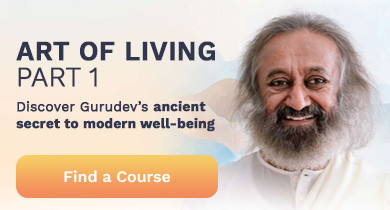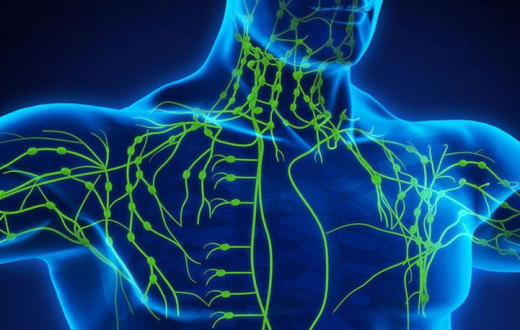By Elizabeth Herman┃Posted: April 17, 2019
As springtime continues, we often look for ways to renew the spaces in which we live. One such approach, vastu shastra, is the ancient vedic science of living in harmony with our environment. Vastu is one of the oldest guides to aligning ourselves and our surroundings with nature.
As the American Institute of Vastu states, “Vastu comes from the same wisdom texts as yoga, meditation and the first medicine, Ayurveda. These texts are thousands of years old… This wisdom is timeless and pertinent in our fast-living world today. Understanding and using it can help us lead healthier, happier lives.”
Vastu in America
It may surprise you to know that some buildings in this country show many elements of vastu shastra. For instance, in Boone, North Carolina, the Art of Living Retreat Center campus is one of the few properties in the US that was built according to this ancient science. The program halls, dining hall and lodges on the main road all face east. This orientation welcomes the renewing energy of the sun at the start of each day. This architecture – one of a kind in the Eastern United States – is itself worth a visit.
As an architect with training in the art of Vastu, Michael Mastro has designed buildings for Boeing and Microsoft in the Pacific northwest, as well as a home for himself and his wife, Robin, among others. Applying the principles that he learned in India allowed him to improve his designs in relation to natural landscape, even when his clients didn’t know about it. “Nobody really knew that I was adding all this knowledge I had learned in India, but it definitely had a good effect,” he says.
Using vastu shastra, the first green science
According to Michael and Robin Mastro, vastu “is the first ‘green’ science. Vastu helps us recognize the powerful impact that our surroundings have on us. When we properly align our environment with nature, balance occurs. Once this balance is created, stress is reduced and the frustrations and limitations in life diminish.”
While your home may already be built based on other types of designs, many of the ideas from vastu can inform the way you use your space. In any pre-designed home, you can arrange colors harmoniously, as the Chinese tradition of Feng Shui also advocates.
As Mastro states in his interview on a Back to the Source podcast, “Vastu helps with aligning your physical body and your environment to the natural alignment of earth’s magnetic energies. You can think of them as longitudinal and latitudinal lines. You are living in harmony with nature.”
Such harmony can help whether you’re building or buying a home, moving into a new apartment, or simply decluttering and reorganizing. Here are some suggestions from vastu:
- When sleeping, it’s ideal to sleep with the head towards the East.
- Electronics, kitchens and electric meters should be in the Southeast.
- Dining areas should be in the West.
- Skylights and other sources of natural lighting should go in the center of the building.
- Grow big trees to the south or west of the house.
- Placing images of the rising suns or water can bring positive energy into a room.
One of the key principles here is the purposeful use of space. This involves thoughtfully looking at our environment and our activities. How can I let my environment support my activities? How can I create space for what matters most?
Spring cleaning & the art of letting go
Spring cleaning is also a great time to practice the art of letting go. Marie Kondo delves into this practice in detail in her New York Times best-selling book, The Life-Changing Magic of Tidying Up. Spring is a great time to re-evaluate what we really need. What’s cluttering up our space? What do we use? What brings us joy? Clearing out items that go unused can clear up mental space too.
In my small apartment, the cardboard box full of gardening equipment and supplies has been sitting in the hallway since I moved in eight and a half months ago. Now, I’m using the tools to replant vegetable and house plants in bigger pots so they can live and grow outside in warmer weather. While most of the contents of the box are useful, it’s time to sort out any scraps of paper and discarded bird seed hulls, and separate the recyclables and compostables from the useful items. It’s also time to find a place for the box that doesn’t block my only hallway between living room, bedroom, bathroom, and kitchen.
Thinking about these tasks and staring into the cluttered gardening box is a waste of time. Once I go ahead and take the initiative to do this, I know I will feel much more ready to prune the bushes and make room for vegetable plants in the dormant garden beds around the southwest edge of this building. So far, I have winter squash, kale, basil, and celery plants that I hope to grow throughout the warmer seasons. I’m planning to grow beans from seeds as well.
Positive home energies
By clearing, cleaning and reorganizing, we create more positive surroundings. We function better and enjoy more in these environments, with which we’re intimately connected. Like many practitioners, you may even find that the more peaceful and content you are, the more you like to create similar spaces! And the more you create a supportive environment for your own mind, the calmer the mind as a result.
By Elizabeth Herman - PhD in English, with concentrations in Rhetoric and Composition, and Literature, she offers writing support to clients, teaches locally, lives in Boone, NC, and volunteers for a better world.





























